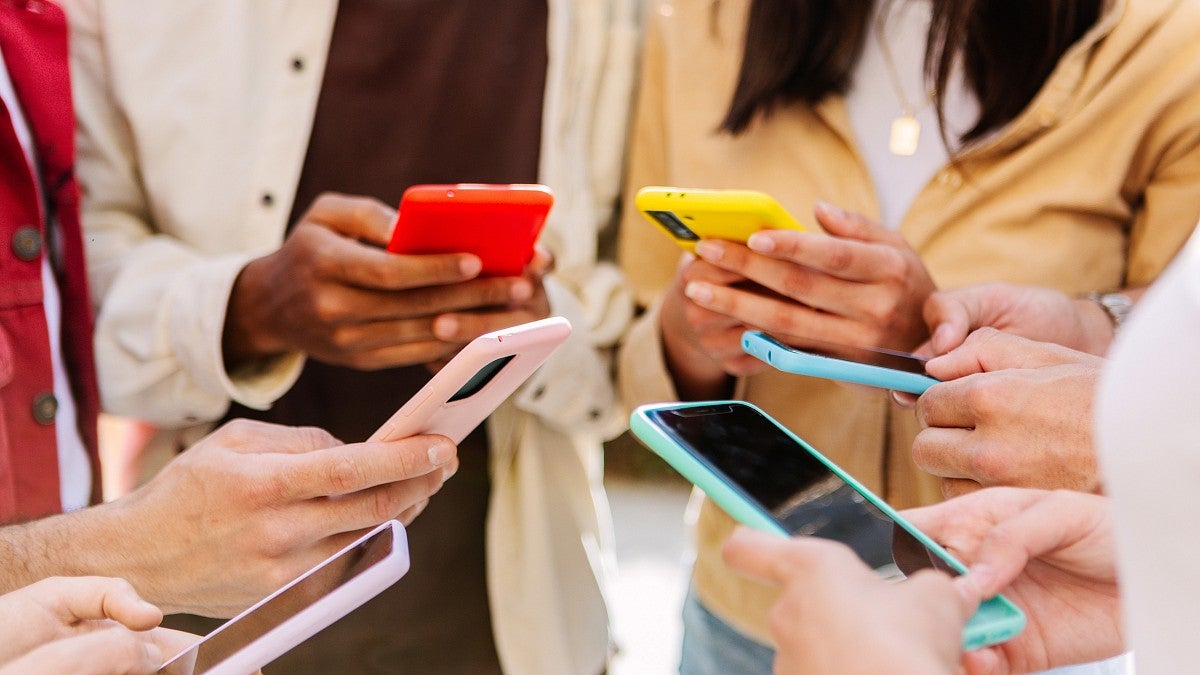A new study led by researchers at the University of Oregon in collaboration with Google Research has found little evidence linking smartphone use with mental well-being in adults.
Published in the Proceedings of the National Academy of Sciences, the study analyzed more than 250,000 days of smartphone usage data from more than 10,000 U.S. adults age 18 and older, making it the largest and most comprehensive investigation to date of how objectively measured smartphone behavior relates to mood and well-being.
The research team, led by Nicholas Allen, the Ann Swindells Professor of Clinical Psychology and director of the University of Oregon’s Center for Digital Mental Health, used objective smartphone data rather than self-reports, which have been shown to be unreliable indicators of actual phone use.
Over a four-week period, participants’ smartphone activity — including screen time, app categories and unlock frequency — was passively recorded and paired with daily mood check-ins. The researchers used statistical techniques to investigate potential relationships between smartphone use and subsequent mood and mental health symptoms across time.
While younger adults showed a slightly stronger link between social media use and lower mood in data that looked at a single point in time, that link did not hold up over longer time periods. In fact, across both group and individual analyses, the effects were either weak or statistically insignificant.
“Our findings challenge the popular assumption that smartphone use is inherently harmful to mental health and well-being,” Allen, the senior author of the study, said. “There’s been a lot of public concern and policy discussion often based on small, self-reported studies. This large-scale, objective data suggests the relationship is far more nuanced and, in most cases, minimal — at least over this time frame.”
The study found that demographic factors such as age and gender were much stronger predictors of mood than smartphone use. For example, younger adults and women reported lower average mood scores, regardless of how much they used their phones.
Allen said health researchers at Google initially reached out to him in 2021 to discuss collaborating on a study of digital device use and well-being.
“We discovered that we both wanted to address some of the limitations of previous work on the topic, like relying on self-report data of phone use patterns, which might not have much association with actual use, and small or biased samples,” he said. “So this was a unique opportunity to establish a collaboration between the technology industry and university researchers to address an important issue, and it provided opportunities that would not have been possible without this partnership.”
Researchers from Google collaborated on the subject recruitment and analysis of data collected using the Google Health Studies app.
“This study represents an important partnership with the University of Oregon to accelerate research on digital well-being and to help generate evidence-based insights so that we can support our users,” said John Hernandez, director and head of clinical research and health impact at Google and a study co-author.
“We are thankful to the more than 10,000 participants who contributed their data to this comprehensive research study. This effort enabled the collection of objective, real-world smartphone data and well-being data at an unprecedented scale,” he said. “Releasing public datasets from this research should enable the broader scientific community to continue performing independent analyses and advance our collective understanding of digital behaviors and well-being.”
While researchers caution that the study was limited to adults age 18 or older and covered only a four-week period, the study contributes methodological advancements and a large public-use real-world dataset to help inform the field.
“Smartphones are part of the context of our daily lives; they’re not inherently good or bad,” Allen said. “The key is understanding how people use them and how technology can be designed to support well-being rather than detract from it.”
—By Thuy Tran, University Communications


